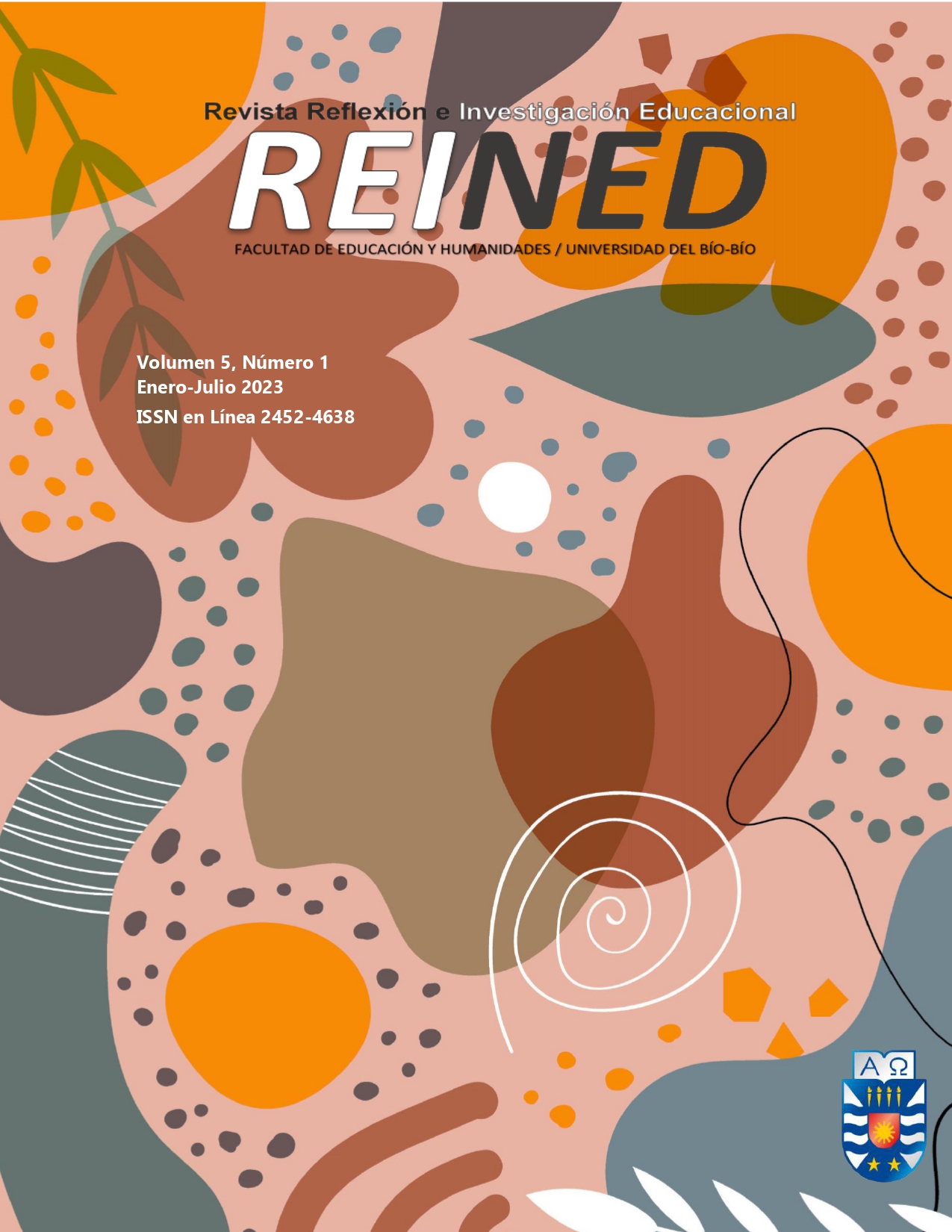Representaciones sociales de estudiantes de enseñanza media en la convivencia escolar durante la pandemia COVID-19
Contenido principal del artículo
Resumen
Las representaciones sociales permiten comprender aquellos conocimientos que se producen en la interacción comunicativa, que se desarrolla en un contexto social. La pandemia del COVID-19 y las medidas sanitarias tomadas a nivel escolar repercutieron en las relaciones sociales de los estudiantes y en la convivencia escolar. La convivencia es uno de los ejes claves para el desarrollo del aprendizaje en las comunidades educativas, para promover la democracia, la inclusión, la participación y resolución pacífica de conflictos. El objetivo de esta investigación es comprender la construcción de las representaciones sociales acerca de la convivencia escolar de los estudiantes de enseñanza media de cuatro establecimientos educativos de Concepción. La metodología se desarrolló desde un paradigma comprensivo interpretativo, con un enfoque cualitativo; como instrumento de elaboración de información se utilizaron entrevistas grupales semi estructuradas, las que fueron analizadas por medio de la técnica de análisis categorial temático, donde se estableció como tema principal la convivencia escolar. Para ello, se utilizó Nvivo como software de apoyo para el análisis realizado. Las representaciones de los estudiantes se configuraron en torno a la subjetividad de construcción identitaria, comunicación y las normas que regulan las interacciones dentro de los contextos escolares.
Detalles del artículo
Citas
Aleixo, R., & Engelman, M. (2022). Social representations overrun and tarnished by cyberbullying. Revista Bioética, 30(1), 205-213. DOI: https://doi.org/10.1590/1983-80422022301520pt
Ascorra, P., López, V., Carrasco, C., Pizarro, I., Cuadros, O., & Núñez, C. (2018). Significados atribuidos a la convivencia escolar por equipos directivos, docentes y otros profesionales de escuelas chilenas. Psykhe, 27, 1-12. DOI: https://doi.org/10.7764/psykhe.27.1.1214
Avilés, J. (2021). Pandemia y Convivencia Escolar: Incertidumbres y retos. Revista Tópicos Educacionales, 27(01), 01-22. DOI: https://doi.org/10.51359/2448-0215.2021.250402
Berger, P., & Luckmann, T. (1976): La construcción social de la realidad. Amorrortu.
Castoriadis, C. (1989): La Institución Imaginaria de la Sociedad. Tusquets Editores
Carrasco, C., & Trujillo, A. (2019). Respeto docente y convivencia escolar: Significados y estrategias en escuelas chilenas. Psicoperspectivas, 18(1), 1-11. DOI: https://doi.org/10.5027/psicoperspectivas-Vol18-Issue1-fulltext-1494
Cruz, F., & Maciel, M. (2018). 'Exclude', 'Cursing', 'Crash': Meanings of violence at school according to students from Paraíba. Psicología Escolar e Educacional, 22(2), 291-300. DOI: https://doi.org/10.1590/2175-35392018025719
Cuadra, M., Castro, P., Tognetta, L., Pérez, D., Véliz, D., & Menares, N. (2021). Teorías subjetivas de la convivencia escolar: ¿Qué dicen los padres? Psicología Escolar e Educacional, 25, 1-9. DOI: https://doi.org/10.1590/2175-35392021221423
Delors, J. (1996). La educación encierra un tesoro. Informe de la Comisión Internacional sobre la educación para el siglo XXI. UNESCO.
Díaz, C. (1992). Métodos y Técnicas de Investigación. Eudema.
Fierro, C., & Carbajal, P. (2019). Convivencia escolar: Una revisión del concepto. Psicoperspectivas, 18(1), 1-14. DOI: https://doi.org/10.5027/psicoperspectivas-Vol18-Issue1-fulltext-1486
Gutiérrez, M., & Fernández, L. (2020). Representaciones sociales de docentes sobre la inclusión del estudiantado con discapacidad. Revista Electrónica de Investigación Educativa, 22(1). 1-13. https://doi.org/10.24320/redie.2020.22.e13.2260 DOI: https://doi.org/10.24320/redie.2020.22.e13.2260
Hernández, R., Fernández, C., & Baptista, M. (2014). Metodología de la investigación. McGraw-Hill.
Jaramillo, D., Jaramillo, L., & Murcia, N. (2018). Acogida y proximidad: Algunos aportes de Emmanuel Levinas a la Educación. Revista Electrónica Actualidades Investigativas en Educación, 18(1), 1-16. DOI: https://doi.org/10.15517/aie.v18i1.31771
Jodelet, D. (1984). La representación social. Fenómenos, concepto y teoría. En S. Moscovici (Ed.), Psicología social II. Psicología social y problemas sociales (pp. 469-494). Paidós.
Koga, V., & Rosso, A. (2021). Structure of social representations of school rules. Praxis Educativa, 16, e2119600. DOI: https://doi.org/10.5212/PraxEduc.v.16.19600.078
Levinas, E. (2001). Entre nosotros. Ensayos para pensar en otro. Pre-textos.
Levinas, E. (2015). Ética e infinito. Machado libros.
López, V., Ramírez, L., Valdés, R., Ascorra, P., & Carrasco, C. (2018). Tensiones y nudos críticos en la implementación de la(s) política(s) de convivencia escolar en Chile. Calidad en la educación, (48), 96-129. DOI: https://doi.org/10.31619/caledu.n48.480
Maric, M. (2018). Estado del arte sobre imaginarios y representaciones sociales en Bolivia. En F. Aliaga, M. Maric y C. Uribe (Ed.). Imaginarios y Representaciones Sociales: Estado de la investigación en Iberoamérica (pp. 21-99). Ediciones USTA DOI: https://doi.org/10.2307/j.ctv1pbwvqw.7
Martínez, C. (2012). El muestreo en investigación cualitativa: Principios básicos y algunas controversias. Ciência & Saúde Coletiva, 17(3), 613-619. DOI: https://doi.org/10.1590/S1413-81232012000300006
Mena, M., & Huneeus, M. (2017). Convivencia Escolar para el aprendizaje y buen trato de todos: hacia una mejor comprensión del concepto. Cultura. Educación y Sociedad, 8 (2), 9-20. DOI: https://doi.org/10.17981/cultedusoc.8.2.2017.01
MINEDUC (2019). Política Nacional de Convivencia Escolar. División de Educación General, Ministerio de Educación de Chile.
MINEDUC (2015). Política Nacional de Convivencia Escolar 2015/2018, Ministerio de Educación de Chile.
MINEDUC (2002). Política de participación de padres, madres y apoderados/as en el sistema educativo, Ministerio de educación de Chile.
Mori, D., Herrera, A., & Huaire, E. (2022). Representaciones sociales de la violencia en ambientes pedagógicos. Revista de Filosofía (Venezuela), 39(especial), 680-694.
Moscovici, S. (1961). El psicoanálisis, su imagen y su público. Huemul.
Orrego, J., & Jaramillo, D. (2019). Educación, cuerpo y alteridad. Encuentros cara a cara para la formación del otro. Alteridad, 14(1), 89-97. DOI: https://doi.org/10.17163/alt.v14n1.2019.07
Ortega, P., & Romero, E. (2021). El valor de la experiencia del alumno como contenido educativo. Teoría de la educación. Revista Interuniversitaria, 33(1), 89-110. DOI: https://doi.org/10.14201/teri.23615
Segovia, P., Basulto, O., & Zambrano, P. (2018). Imaginarios sociales y representaciones: su aplicación a análisis discursivos en tres ámbitos diferentes. EMPIRIA. Revista de Metodología de Ciencias Sociales. (41), 79-102.
Tarkar, P. (2020). Impacto de la Pandemia Covid-19 en el sistema educativo. Revista Internacional de ciencia y tecnología avanzadas, 29(9), 3812-3814
Van Manen, M. (2003). Investigación educativa y experiencia vivida. Idea Books

